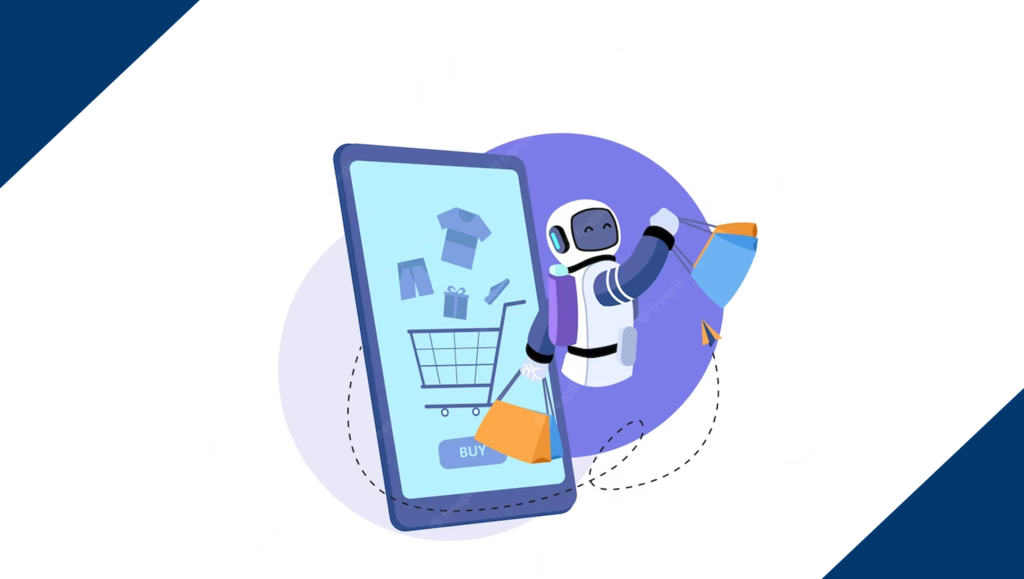Merchandising refers to the marketing or sale of products and services. Typically, when we talk about merchandising, we’re talking about the retail sale of products to people. However, the phrase can also be used to refer especially to the different advertising and promotion campaigns used to advertise retail goods.
Electronic point-of-sale systems and targeted mobile ads are just two examples of how technological advancements have completely changed how retailing functions. Product management, visual merchandising, retail merchandising, digital merchandising, and omnichannel merchandising are a few examples of merchandising categories.
The phrase “merchandising” refers to a broad range of tasks, including selecting quantities, setting prices, designing attractive displays, coming up with marketing plans, and dispensing discounts or coupons. The sale of products to end-user consumers is referred to as merchandising in a larger sense.
Depending on a region’s culture and environment, the cycles of retailing change. These cycles might be planned to coincide with class times, local and seasonal vacations, and expected weather trends. Merchandising can also mean different things in various contexts of retail sales. Using one product, image, or brand to market another is an example of merchandising in marketing.
Retailers may or may not make the products they sell, therefore monitoring overall sales income offers useful information about how the business is doing. This is especially true in customer-to-customer markets, where shops connect buyers and sellers without taking part in the actual transactions themselves.
The world of marketing is changing, especially in the United States. The duties of chief merchants now extend beyond the selection and display of products to encompass a larger emphasis on improving the customer experience as well as the creation of design and marketing strategies to more effectively showcase goods. As a result, the chief merchant’s responsibilities now include hiring new employees and designing inventive displays.
How AI has transformed the world of merchandising?
AI has significantly changed the world of marketing in a number of ways. The ability to handle enormous amounts of data and deliver insights that can assist merchants in making wise decisions about their product offerings, pricing, and marketing tactics is one of its most critical features.
For instance, AI-powered merchandising solutions can utilize machine learning algorithms to examine customer data and spot trends in their preferences, behavior, and past purchases. This data can be used to focus product suggestions for specific customers, personalize marketing messaging, and improve pricing and inventory management.
By examining past sales data, industry trends, and other pertinent variables, AI can also increase the precision of demand predictions. By anticipating fluctuations in demand, adjusting their inventory levels, and avoiding stockouts or overstocks, businesses can prevent these problems.
Furthermore, AI-driven visual merchandising solutions can assist businesses in designing and developing captivating displays that draw customers and boost sales. These technologies evaluate videos and images of product displays and store layouts using computer vision technology, making suggestions on how to improve them for the greatest impact.
In general, AI is changing the way retailers think about merchandising by enabling them to make data-driven decisions, improve consumer experiences, and boost profitability.
Read More: SalesTechStar Interview with Chris Reuter, Head of Growth at Prefect
How artificial algorithm methods are enhancing the efficacy of these AI-powered merchandising platforms?
These AI-powered merchandising solutions evaluate enormous amounts of data, including customer preferences, purchase histories, and current inventory levels, using advanced algorithms and machine learning techniques.
- Offer product suggestions and make data-driven decisions: Retailers can use this data to tailor product suggestions for every customer, optimize their product catalog based on demand and supply, and spot trends and patterns in consumer behavior to enhance the shopping experience as a whole. Retailers may utilize AI to make data-driven decisions in real time, allowing them to stay flexible and competitive in a retail environment that is continuously evolving.
The fundamental concept of a recommendation engine is at the core of most e-commerce platforms. When a customer’s search parameters for price, style, color, and type are utilized to find products based on their properties, this can take the form of an explicit recommendation. Depending on the size of the catalog, the caliber of the product data, and the structure of the available filters, the list’s length and options may change.
Customers’ language choices are crucial because they could use different terms to convey what they desire. Additionally, the overall style, layout, and organization of the website might help or hinder user navigation. The arrangement, selection, and curation of a brand’s products are frequently the most important differentiators apart from price and exclusive merchandise.
- Discounting will become obsolete: Discounting may become obsolete in the retail industry as artificial intelligence algorithms advise businesses on what goods to buy and when to sell them for full price. Online buyers will be able to describe their dream garment and get results in a matter of seconds thanks to AI-powered search engines.
- Accurate forecasts: Together with AI, designers, merchandisers, and buyers will also anticipate customers’ preferences before they are even aware of them. This perspective not only makes demand forecasts more accurate, but it also emphasizes the collaborative nature of AI and human workers and supports the notion that search is a conversation.
- Automated algorithms help in successful retailing and managing variations in audience segments: The management of audience segment variations requires automated algorithms because it might be difficult for humans to identify these segments due to their latent, difficult-to-describe qualities. Unsupervised machine learning algorithms that construct segments based on big data sets and numerous transactions can be used to find hidden characteristics, such as complex demographics and recent purchases. The limitations of this method, though, make it less magical than it first appears.
First, for the algorithms to function properly, there must be a large volume of users and transactions. Variables need to be defined around products that can be mixed, and experiments need to be done with a control group to compare results. This requires serious thought and is not a simple task.
Second, it’s essential to have high-quality data. Customer data must be integrated across platforms and systems, and a large variety of characteristics, including demographics, purchase history, and behavioral data, must be taken into account. This frequently calls for data purification and system mapping, which can be a time-consuming operation.
So, algorithms are crucial to successful retailing because they enable segmentation and the discovery of hidden features. Although there are restrictions and limitations, the use of unsupervised machine learning algorithms can significantly improve the precision and efficacy of these methods.
- Better Online Customer experience as it is driven by data: Online customer experience is improved in a number of ways by platforms with AI. They can, for starters, tailor product recommendations and promotions based on a customer’s browsing and purchasing history to make the shopping experience more enjoyable. This degree of customization can boost sales, customer loyalty, and engagement.
Retailers can make data-driven decisions on inventory management, pricing, and promotions thanks to the second benefit of AI-powered platforms: they can analyze massive volumes of data to spot patterns and trends. This may result in better product accessibility, smarter pricing tactics, and greater sales.
Third, platforms that use AI to help with search and navigation can make it simpler for users to find what they’re looking for. Such systems may deliver more accurate and relevant search results by examining client search words and behavior, which will reduce irritation and increase the likelihood of purchase.
Retailers can discover and respond in real-time to client issues like website glitches, payment problems, or shipment delays with the aid of AI-powered platforms. Retailers can enhance the general customer experience and cultivate customer trust by swiftly fixing these problems.
Major retailers like Target and Walmart provide similar products at comparable costs, but their websites’ personalities, identities as brands, structures, navigation, and merchandising features give customers a unique experience. Despite the fact that it may seem clear, these companies are ultimately vying for customers based on their data and data architecture. Although product managers’ and merchandisers’ efforts are important, data ultimately determines how customers are treated online.
Read More: Uplevel Financial Acumen – Fast – to Retain Customers & Win Deals
Top 7 AI-Powered Merchandising Platforms for Personalized Customer Experiences
An AI-powered merchandising platform is a technological innovation that enhances the functionality of a retailer’s e-commerce website using artificial intelligence (AI) and machine learning (ML) algorithms. These platforms support online retailers in managing their product libraries, tracking consumer behavior, and providing customers with tailored product recommendations.
These systems can use AI to evaluate a tremendous quantity of client data, including search queries, purchase history, and browsing history, to spot trends and predict what the customer will want. The platforms can generate tailored product recommendations for each consumer based on this data, enhancing the likelihood of a sale and raising customer happiness.
Additionally, by determining which products are selling well and which are not, these platforms can assist retailers in optimizing their product catalogs. Furthermore, they can help retailers optimize pricing plans, enhance inventory control, and even foresee which goods are most likely to become popular in the future.
In the end, AI-powered merchandising solutions can assist merchants in enhancing their e-commerce performance by offering insightful analyses and suggestions that can improve the consumer experience, stimulate demand, and boost revenue.
1. Dynamic Yield
Dynamic Yield is an artificial intelligence (AI)-powered merchandising platform that assists merchants in optimizing their mobile apps and e-commerce websites by offering customized product recommendations, relevant content, and improved user experiences.
Features
- Dynamic Yield provides a range of AI-powered features that enable businesses to deliver personalized and optimized customer experiences. Some of its key features include:
- Real-time Personalization: Dynamic Yield’s machine learning algorithms analyze user behavior in real-time to provide personalized product recommendations, messaging, and content across web, mobile, and email channels.
- A/B Testing: Dynamic Yield’s A/B testing tools enable businesses to test and optimize different variations of their website, app, or email campaigns to increase engagement and conversion rates.
- Segmentation: Dynamic Yield’s segmentation tools enable businesses to divide their customer base into different segments based on behavior, preferences, and other criteria, and then deliver targeted content and promotions to each segment.
- Recommendations: Dynamic Yield’s recommendation engine provides product recommendations to customers based on their browsing and purchase history, as well as other data points, such as location and weather.
Benefits
Dynamic Yield’s AI-powered features offer several benefits for businesses, including:
- Improved Customer Engagement: By delivering personalized and relevant content and recommendations, Dynamic Yield helps businesses increase customer engagement, time on site, and click-through rates.
- Increased Conversion Rates: Dynamic Yield’s real-time personalization and A/B testing tools enable businesses to optimize their messaging and content to increase conversion rates and revenue.
- Reduced Cart Abandonment: Dynamic Yield’s recommendations and other features help businesses reduce cart abandonment rates by providing customers with personalized product recommendations and promotions.
- Enhanced Customer Loyalty: By providing personalized and relevant experiences, Dynamic Yield helps businesses increase customer loyalty and repeat purchase rates.
- Streamlined Merchandising: Dynamic Yield’s AI-powered merchandising platform automates and optimizes many aspects of the merchandising process, enabling businesses to focus on other areas of their operations.
2. Vue.ai
Vue.ai is another AI-powered merchandising platform that helps retailers to optimize their e-commerce websites and mobile apps. Here are some ways that Vue.ai helps retailers. Vue.ai is an AI-powered merchandising platform that uses advanced technologies like computer vision, machine learning, and natural language processing to automate and optimize product content creation, product tagging, and product recommendations. Some of its key features include:
- Visual Search: Vue.ai’s visual search feature allows customers to search for products by uploading images or using their cameras, making it easier for them to find exactly what they’re looking for.
- Virtual Styling: With Vue.ai’s virtual styling feature, customers can try on clothes virtually to see how they look before making a purchase. This feature reduces the risk of returns and increases customer satisfaction.
- Personalized Recommendations: Vue.ai’s machine learning algorithms analyze user behavior and preferences to provide personalized product recommendations and targeted content across web, mobile, and email channels.
- Product Tagging: Vue.ai’s AI-powered product tagging feature automatically identifies and tags products, making it easier for businesses to manage their inventory and improve their search and discovery capabilities.
Benefits: Vue.ai’s AI-powered features provide a range of benefits for businesses, including:
- Increased Customer Engagement: Vue.ai’s personalized recommendations and virtual styling features increase customer engagement by providing a unique and interactive shopping experience.
- Higher Conversion Rates: By providing personalized recommendations and relevant content, Vue.ai helps businesses increase their conversion rates and drive more sales.
- Reduced Returns: Vue.ai’s virtual styling feature reduces the risk of returns by allowing customers to see how clothes fit before making a purchase.
- Improved Inventory Management: Vue.ai’s product tagging feature helps businesses manage their inventory more effectively by automatically identifying and tagging products.
- Better Search and Discovery: Vue.ai’s product tagging feature also improves search and discovery capabilities by making it easier for customers to find what they’re looking for.
3. Apptus
Features: Apptus offers a range of features to help businesses deliver personalized and relevant customer experiences across all channels. Some of its key features include:
- Real-time recommendations: Apptus’ machine learning algorithms analyze user behavior and preferences to provide real-time recommendations on products, search results, and product bundles. This helps businesses increase customer engagement and conversion rates.
- Personalized search: Apptus enables businesses to provide personalized search results based on user behavior and preferences. This helps customers find the products they are looking for more quickly, improving their overall experience.
- A/B testing: Apptus offers A/B testing tools that enable businesses to test and optimize their merchandising strategies in real-time. This helps businesses improve their conversion rates and revenue.
- Analytics: Apptus provides real-time analytics and reporting tools that help businesses monitor and optimize their merchandising strategies. This enables businesses to make data-driven decisions and improve their overall performance.
Benefits:
By leveraging machine learning algorithms and other AI-powered technologies, Apptus provides a range of benefits for businesses, including:
- Increased revenue: Apptus’ personalized recommendations and search results help businesses increase their conversion rates and revenue.
- Improved customer satisfaction: Apptus’ personalized search results and recommendations improve the overall customer experience, leading to increased customer satisfaction and loyalty.
- Reduced costs: Apptus’ A/B testing and optimization tools enable businesses to improve their merchandising strategies, leading to reduced costs and improved efficiency.
- Data-driven decision-making: Apptus’ real-time analytics and reporting tools provide businesses with valuable insights into customer behavior and performance metrics. This helps businesses make data-driven decisions and improve their overall performance.
4. Nosto
Notso is an AI-powered merchandising platform that helps retailers to optimize their e-commerce websites by providing personalized product recommendations, social proof, and real-time analytics.
Features:
Nosto provides a range of features that help businesses deliver personalized and relevant customer experiences across web, mobile, and email channels. Here are some of its key features:
- Personalized product recommendations: Nosto’s machine learning algorithms analyze user behavior and purchase history to provide personalized product recommendations in real-time. These recommendations can be displayed on product pages, category pages, and in cart abandonment emails.
- Automated segmentation: Nosto’s segmentation tools enable businesses to create targeted campaigns based on user behavior, purchase history, and other criteria. These campaigns can be delivered across all channels, including web, mobile, and email.
- A/B testing: Nosto’s A/B testing tools enable businesses to test different merchandising strategies and campaigns to optimize their performance. This helps businesses improve conversion rates and revenue.
- Real-time analytics and reporting: Nosto’s real-time analytics and reporting tools provide businesses with insights into user behavior, campaign performance, and revenue. This helps businesses monitor and optimize their merchandising strategies in real-time.
Benefits:
Nosto’s AI-powered features offer several benefits for businesses looking to improve customer engagement and increase revenue.
Here are some of its key benefits:
- Personalized customer experiences: Nosto’s personalized product recommendations and content help businesses deliver relevant and personalized experiences that increase customer engagement and loyalty.
- Increased conversion rates: Nosto’s machine learning algorithms analyze user behavior and preferences to provide personalized recommendations and content that help businesses improve conversion rates and revenue.
- Optimized campaigns: Nosto’s A/B testing and real-time analytics tools help businesses optimize their merchandising strategies and campaigns for maximum performance.
- Cross-channel consistency: Nosto’s platform enables businesses to deliver consistent and personalized experiences across all channels, including web, mobile, and email. This helps businesses improve customer satisfaction and loyalty.
5. Emarsys
Emarsys is an AI-powered marketing platform that helps retailers to optimize their e-commerce websites and engage with customers through personalized messaging and content.
Features:
- Emarsys offers a range of features that enable businesses to create personalized and relevant customer experiences across all channels. Some of its key features include:
- Machine learning algorithms: Emarsys uses machine learning algorithms to analyze user behavior and purchase history to provide personalized product recommendations, content, and promotions.
- Segmentation tools: Emarsys offers segmentation tools that enable businesses to group customers based on their behavior and preferences, and deliver targeted content and promotions to each group.
- A/B testing: Emarsys offers A/B testing tools that enable businesses to test different merchandising strategies and optimize their campaigns based on real-time results.
- Real-time analytics: Emarsys offers real-time analytics and reporting tools that enable businesses to monitor their merchandising strategies and make data-driven decisions.
Benefits:
- Emarsys’ features provide a range of benefits that help businesses increase revenue, improve customer engagement, and optimize their merchandising strategies. Some of its key benefits include:
- Personalized customer experiences: Emarsys’ machine learning algorithms enable businesses to provide personalized product recommendations, content, and promotions that resonate with each customer’s unique preferences and behavior.
- Increased revenue: By providing personalized and relevant customer experiences, Emarsys helps businesses increase customer loyalty, repeat purchases, and revenue.
- Improved customer engagement: Emarsys’ segmentation tools enable businesses to deliver targeted content and promotions to each customer group, improving engagement and reducing churn rates.
- Optimized merchandising strategies: Emarsys’ A/B testing and real-time analytics tools enable businesses to test different merchandising strategies and optimize their campaigns based on real-time results, improving ROI and efficiency.
6. Bunting :
Bunting is an AI-powered merchandising platform that helps retailers to optimize their e-commerce websites by providing personalized product recommendations, social proof, and real-time analytics.
Features of Bunting:
Bunting is an AI-powered merchandising platform that offers a range of features to help businesses deliver personalized and targeted customer experiences. Some of its key features include:
- Product recommendations: Bunting’s machine learning algorithms analyze user behavior and purchase history to provide real-time product recommendations that are personalized to each customer.
- Messaging: Bunting’s messaging feature allows businesses to deliver personalized messages to customers at the right time and place, such as on a product page or in a cart.
- Content personalization: Bunting’s content personalization feature enables businesses to deliver personalized content based on each customer’s behavior and preferences.
- A/B testing: Bunting’s A/B testing feature allows businesses to test different merchandising strategies to determine which ones are most effective.
- Analytics and reporting: Bunting’s analytics and reporting tools provide real-time data on customer behavior, allowing businesses to make informed decisions about their merchandising strategies.
Benefits of Bunting:
By leveraging machine learning algorithms and other AI-powered technologies, Bunting provides a range of benefits to businesses, including:
- Increased revenue: Bunting’s personalized product recommendations and messaging features help businesses increase conversion rates and average order value, leading to increased revenue.
- Improved customer engagement: Bunting’s personalized content and messaging features help businesses improve customer engagement and loyalty.
- Optimized merchandising strategies: Bunting’s A/B testing, analytics, and reporting tools enable businesses to optimize their merchandising strategies and improve their overall performance.
- Reduced bounce rates: Bunting’s personalized product recommendations and messaging features help businesses reduce bounce rates and increase the amount of time customers spend on their website.
7. Syte:
Syte is an AI-powered visual search and discovery platform that helps retailers to optimize their e-commerce websites and mobile apps. Customers may find products using visual characteristics like color, shape, and pattern thanks to Syte’s usage of computer vision technology. This aids merchants in enhancing client satisfaction and boosting sales. Let’s see other benefits and features of this.
Features:
- AI-powered visual search and merchandising platform
- Uses computer vision and machine learning to analyze product images
- Enables customers to find similar products by uploading images or using their camera
- Offers product tagging feature to accurately categorize products
- Provides personalized product recommendations based on browsing and purchase history
Benefits:
- Enables retailers to provide a seamless and personalized shopping experience
- Increases likelihood of purchase through visual search and accurate product tagging
- Provides relevant search results to customers
- Increases customer engagement and conversion rates
- Helps retailers increase revenue through personalized product recommendations
Conclusion:
The last two years, in particular, have seen a rise in the importance of merchandise in creating a satisfying consumer experience. With fiercer competition and changing customer habits, it is crucial for merchandisers in today’s retail environment to be able to respond rapidly to market conditions and promotion results by employing the real-time information that AI-powered merchandising platforms offer.
AI engines will become “super recommendation engines” as they mature, with the potential to significantly improve the capabilities of e-commerce websites. Companies that make wise investments in these artificial intelligence (AI) applications will be better able to understand their consumers’ needs, increase their market share, and become fierce competitors in their sector.
Predictive machine learning is being used in retail to successfully meet the difficulty of handling massive amounts of information with little resources, following similar developments in financial markets and marketing automation. It is forecasted that over 90% of the virtual shopping experience will be automated by computers using AI-powered e-commerce optimization in the next five years as computers continue to rule the retail sector.





















